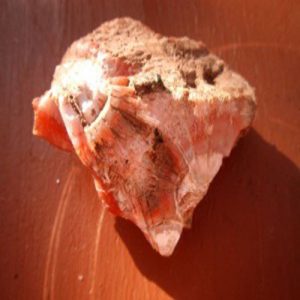Thomsonite-(Ca): Gemstones Information
Thomsonite is a captivating mineral known for its unique crystal structure, vibrant colors, and fascinating geological occurrences. Named after Scottish mineralogist Thomas Thomson, this rare zeolite mineral belongs to the natrolite subgroup and is prized by collectors and enthusiasts for its beauty and rarity. Here, we delve into the world of thomsonite, exploring its discovery, characteristics, occurrences, and significance.
Discovery and Characteristics:
Thomsonite was first described in 1820 by Scottish mineralogist Thomas Thomson, who encountered the mineral in volcanic rocks on the Isle of Skye in Scotland. It is a hydrated sodium, calcium, and aluminum silicate mineral, often forming in radial or botryoidal aggregates with a silky or pearly luster. Thomsonite crystals are typically transparent to translucent and can exhibit a range of colors, including white, pink, green, yellow, and orange. Its crystal structure is characterized by interconnected rings of silicate tetrahedra, giving rise to its unique appearance and optical properties.
Crystal Structure:
Thomsonite belongs to the zeolite group of minerals, which are characterized by their porous structures and ability to absorb and release water molecules. Its crystal structure consists of interconnected channels and cavities that can accommodate water molecules and other cations. This porous nature gives thomsonite its ability to act as a molecular sieve, making it useful in various industrial and scientific applications, including water purification and catalysis.
Occurrences:
Thomsonite is typically found in association with volcanic rocks, particularly basalt and gabbro, which are rich in silica and aluminum. It forms as secondary mineral deposits in cavities and vesicles within these rocks, where it crystallizes from hot, silica-rich fluids that percolate through the rock. Significant occurrences of thomsonite have been reported in regions with volcanic activity, including Scotland, Iceland, India, Canada, and the United States.
Varieties:
Thomsonite exhibits several varieties based on its color, crystal habits, and geological occurrences. Common varieties include:
Pink thomsonite: Characterized by its pink coloration, often found in botryoidal or stalactitic formations.
Green thomsonite: Exhibits green hues due to the presence of trace amounts of iron or other impurities.
Cat’s eye thomsonite: Displays chatoyant or “cat’s eye” optical effects caused by parallel fibrous inclusions within the crystal structure.
Tube thomsonite: Forms as long, tubular crystals resembling straws or hollow tubes.
Each variety of thomsonite possesses its own unique aesthetic appeal, attracting collectors and lapidaries seeking specimens for display or jewelry-making.
Significance and Uses:
Thomsonite is highly valued by mineral collectors and lapidaries for its aesthetic beauty and rarity. Its vibrant colors, intricate crystal structures, and unique optical effects make it a prized addition to any mineral collection or lapidary project. Thomsonite specimens are often polished to showcase their natural beauty, with cabochons and beads used in jewelry-making.
Beyond its ornamental uses, thomsonite also has practical applications in various industries. Its porous structure and ability to adsorb water molecules make it useful in water purification systems and as a molecular sieve in chemical processes. Additionally, thomsonite has been studied for its potential use as an absorbent material for hazardous substances and pollutants in environmental remediation efforts.
Conclusion:
Thomsonite, with its captivating colors, intricate crystal structures, and fascinating geological occurrences, continues to captivate the hearts and minds of mineral enthusiasts and collectors worldwide. From its discovery on the Isle of Skye to its diverse occurrences in volcanic regions around the globe, thomsonite stands as a testament to the beauty and diversity of the Earth’s mineral kingdom. Whether admired for its aesthetic appeal, studied for its geological significance, or utilized for its practical applications, thomsonite remains a cherished gem of the natural world.





